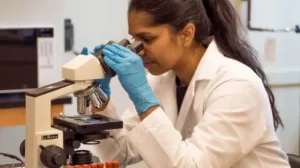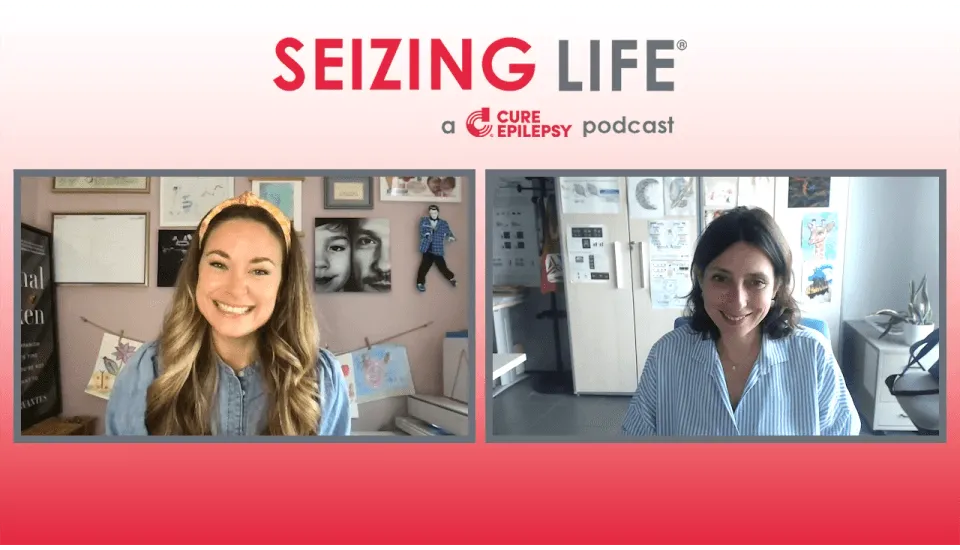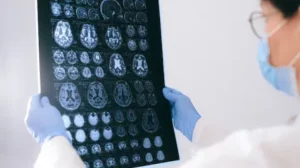Serendipity in Science: new uses for old drugs
Drug repurposing fast-tracks treatments for epilepsy
When CURE Epilepsy initially funded Dr. Katty (Jing-Qiong) Kang of Vanderbilt University back in 2007, it was to study a piece of basic science: GABA-A receptor mutations. No one could have predicted that this work would generate new questions about how a misfolded protein affects the brain — or that it would lead to discovering that an FDA-approved urea cycle disorder drug, phenylbutyrate, can provide seizure relief to some children with rare genetic epilepsies.
That’s the thing about science—serendipity and following curiosity can lead to incredible outcomes. In Dr. Kang’s case, she brought interesting data about phenylbutyrate and SLC6A1 epilepsy to her colleague Dr. Zach Grinspan of Weill Cornell, who had his own chance encounter with a colleague studying the same drug for a different rare epilepsy related to STXBP1 gene mutations. This led the pair to collaborate on drug repurposing across rare genetic epilepsies, knowing that testing an existing drug could shorten the time needed to bring a treatment to the community.
And time was of the essence for one Texas mother. In 2018 Amber Freed’s son, Max, had been diagnosed with a rare condition caused by a mutation in SLC6A1, a gene that makes a protein responsible for shuttling a chemical called GABA, the major inhibitory neurotransmitter, back into brain cells. When damaged by this mutation, the protein malfunctions, leading to a chemical imbalance in the brain. The condition begins as a developmental delay, but then progresses to movement difficulties, intellectual disability, and seizures.
“It’s like childhood dementia,” Freed says.
When considering the most promising science to fund, Freed and her advocacy group, SLC6A1 Connect, decided to pursue drug repurposing, an approach to find new uses for compounds that have already been approved for other conditions.
SLC6A1 Connect funded Dr. Kang to investigate the underlying pathology of SLC6A1 mutations. Drawing on her CURE Epilepsy-funded research on GABA-A receptors, Dr. Kang proposed testing phenylbutyrate as a possible therapy for SLC6A1 related epilepsy. She had observed similarities between mutant GABA-A receptors and the mutant SLC6A1 protein, suggesting that the drug might be able to rescue the mutant receptors and transporters.
By October 2020, Dr. Kang’s team first found that phenylbutyrate reduced seizures in a mouse model of SLC6A1 mutation [1] and got a clinical trial going by June 2021 — only three years after Max was diagnosed. Freed enrolled her son in the trial, and she credits the drug with allowing Max, now 8 years old, to talk and have some control over his seizures. Overall, preliminary results showed the drug helps stop seizures in children with SLC6A1 mutations, as well as in those with other types of genetic epilepsies [2].
An alternative pathway
Drug repurposing offers an efficient alternative to developing drugs from scratch, which can take over a decade, cost up to $2.5 billion, and still usually fails, with only 10% of new drugs making it to market. In contrast, with their already established safety record in humans, repurposed drugs can often get to patients in less time, with lower cost, and a higher success rate than traditional drug discovery [3]. However, demonstrating that a drug can treat specific additional conditions is necessary for regulatory approval and to increase the likelihood that insurance will cover the medicine for a new indication.
The epilepsy community has benefited from drug repurposing before. Some people with the genetic disorder Tuberous Sclerosis Complex (TSC) get seizure relief from everolimus, an immunosuppressant drug originally approved for cancer and itself the product of a serendipitous discovery related to soil samples on Easter Island. Everolimus inhibits the mTOR pathway, which is involved in cell growth and proliferation underlying both TSC and cancer.
In another exciting example, a rheumatoid arthritis drug (tofacitinib) may stave off epilepsy development after head trauma. CURE Epilepsy-funded University of Wisconsin researchers used methodical, computational screening to examine the way thousands of genes were expressed in the brains of mice with and without epilepsy. They found a protein called STAT3, key to a cell signaling pathway called JAK. The JAK pathway is also implicated in arthritis; in a key insight, Drs. Avtar Roopra and Olivia Hoffman noticed that epilepsy was less common than normal for arthritis patients who had been taking an anti-inflammatory drug. In mouse and human brain tissue, the team has uncovered a pattern of JAK pathway activity occurring within brain cells after head trauma [4]. This cellular response to trauma could be a key step toward developing epilepsy, and it is orchestrated in part by this pathway’s driving of inflammation. Tofacitinib inhibits the pathway’s inflammatory actions, and when given even weeks after head trauma in a mouse model of acquired epilepsy, it suppresses seizures [5]. With additional CURE Epilepsy funding, Roopra and Hoffman are now exploring how long this protective effect can last.
As drug repurposing research gains traction, and more candidate drugs are identified by both serendipity and evolving data science methods, regulatory pathways will have to adapt to expedite approvals for repurposed drugs. Despite the SLC6A1 trial’s speedy results and promising CURE Epilepsy-funded studies for phenylbutyrate and related compounds for additional epilepsy-related diagnoses including SYNGAP1-related disorder and Dravet syndrome [6], the regulatory pathway to approval and subsequent insurance coverage is murky.
Yet the benefits of drug repurposing are crystal clear.
“I am forever grateful for the life-changing funding CURE Epilepsy provided, which led to the use of phenylbutyrate to treat epilepsy,” Kang says. “Now children are benefiting from the drug and it’s incredible to see the impact.”
###
Dr. Kang would like to thank hero moms like Susan Axelrod, Dr. Terry Jo Bichell, Amber Freed and Monica Elnekaveh who helped make this amazing progress happen.
Literature Cited
- Nwosu, G., Mermer, F., Flamm, C., Poliquin, S., Shen, W., Rigsby, K., & Kang, J. Q. (2022). 4-Phenylbutyrate restored γ-aminobutyric acid uptake and reduced seizures in SLC6A1 patient variant-bearing cell and mouse models. Brain communications, 4(3), fcac144. https://doi.org/10.1093/braincomms/fcac144
- Grinspan, Z. M., Burré, J., Cross, J., Ross, M. E., Stone, A., Basma, N., Gao, K., Kang, J.-Q., Lim, J., Dubow, E., Abila, M., Miele, A., & Demarest, S. (2024a). 4-Phenylbutyrate for STXBP1 and SLC6A1. Safety, Tolerability, Seizure, and EEG Outcomes. A Case Series at 2 Centers. https://doi.org/10.1101/2024.11.06.24316676
- Walker M. C. (2024). Drug repurposing in status epilepticus. Epilepsy & behavior : E&B, 161, 110109. https://doi.org/10.1016/j.yebeh.2024.110109
- Khan N, Schoenike B, Basu T, Grabenstatter H, Rodriguez G, Sindic C, Johnson M, Wallace E, Maganti R, Dingledine R, Roopra A. A systems approach identifies Enhancer of Zeste Homolog 2 (EZH2) as a protective factor in epilepsy. PLoS One. 2019 Dec 31;14(12):e0226733. doi: 10.1371/journal.pone.0226733. PMID: 31891591; PMCID: PMC6938365.
- Hoffman et al 2025 PMID 40106581
- Shen W, Flamm C, Delahanty AJ, Casteel E, Biven M, DeLeeuw MB, Poliquin S, Nwosu G, Randhave K, Kang JQ. 4-Phenylbutyrate promoted wild-type γ-aminobutyric acid type A receptor trafficking, reduced endoplasmic reticulum stress, and mitigated seizures in Gabrg2+/Q390X mice associated with Dravet syndrome. Epilepsia. 2024 Jan;65(1):204-217. doi: 10.1111/epi.17779. Epub 2023 Nov 29. PMID: 37746768; PMCID: PMC10842976.





